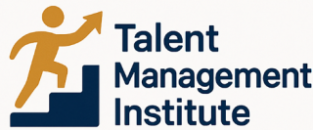
Understanding Workplace-Based Assessments
The Crucial Role of Workplace-Based Assessments in Talent Management
In today's rapidly evolving work environment, honing the skills of employees is paramount. This is where workplace-based assessments (WBAs) come into play, acting as a key driver in nurturing talent and enhancing employee capabilities. These assessments provide a mechanism to evaluate the multifaceted aspects of an individual’s performance directly in their professional setting.
In fields like medical education, assessments like the mini clinical evaluation exercise (mini-CEX) and case-based discussions have been widely adopted. These tools offer a valuable insight into trainees' procedural skills, combining direct observation with structured feedback. Not only do they aid in improving performance, but they also enhance learning and development through continuous observation and feedback loops.
Employing real-time feedback mechanisms is essential. Through tools like mini clinical assessments and multisource feedback, employees receive immediate input on their performance. This provides an opportunity for immediate corrective action and learning, ultimately fostering a culture of ongoing education and quality improvement. Such assessments enable organizations to closely align their skill-management strategies with their overall organizational goals.
In implementing effective workplace-based assessments, consider strategies such as direct observation and procedural skills evaluation, which underscore the educational impact of regular feedback. In doing so, organizations not only bolster individual performance but also drive organizational development forward.
Benefits of Real-Time Feedback
Advantages of Timely and Constructive Input
Incorporating feedback into workplace-based assessments (WPBA) is pivotal for employee development. One significant strength of real-time feedback is its ability to facilitate immediate enhancements in an individual’s performance. This dynamic input not only accelerates the educational process but also supports procedural skill refinement, crucial in a clinical and medical education context.
Real-time assessments offer multiple benefits including:
- Precision in Learning: Immediate feedback helps trainees make precise adjustments to procedural skills. This is essential in domains where accuracy is paramount, such as medical and clinical evaluations.
- Enhanced Engagement: Engaging employees with ongoing feedback fosters a culture of continuous learning and skill enhancement, improving overall performance.
- Progress Tracking: When feedback is timely, it allows for effective monitoring and documentation of growth over time. Tools like mini clinical evaluation exercises (mini cex) and direct observation procedural skills (DOPS) are instrumental in these assessments.
- Comprehensive Development: Utilizing multisource feedback and case-based assessments enriches the quality of evaluations through diverse perspectives in workplace-based assessments.
Real-time feedback is not just about monitoring, but about fostering growth, skill development, and quality improvement which aligns with organizational objectives. For a deeper dive into leveraging real-time feedback efficiently for maximizing talent, explore maximizing talent.
Implementing Effective Assessment Strategies
Strategically Applying Workplace-Based Assessment Tools
Effective implementation of workplace-based assessments (WPBAs) requires strategic planning and execution. The process involves selecting the right assessment tools and aligning them with the desired outcomes. Here are key elements to consider:- Selection of Assessment Tools: Choose assessment methods tailored to your organization's unique needs. Tools such as mini clinical evaluation exercises (mini-CEX), direct observation, and multisource feedback play pivotal roles in assessing procedural skills and clinical competence. For medical education, aligning these tools with training objectives is essential.
- Training Assessors: Provide training for your educational supervisors and assessors. They need to be skilled in delivering constructive feedback and conducting case-based discussions. This ensures assessments are consistent and grounded in educational impact.
- Integrating Real-Time Feedback: Constructive, immediate feedback is critical for learning and development. Implementing systems for real-time assessment ensures that trainees receive timely insights into their performance, facilitating continuous improvement.
- Embedding in the Workflow: Assessments should be seamlessly integrated into day-to-day operations. This approach emphasizes practical, procedural skill evaluation and helps in identifying areas for quality improvement.
- Linking to Goals: Align these assessments with organizational goals to foster a culture of growth. This alignment enhances educational outcomes and supports trainees in achieving proficiency in their respective fields.
Aligning Assessments with Organizational Goals
Seamlessly Integrating Assessments with Company Vision
Aligning workplace-based assessments with organizational goals is pivotal to maximizing the potential of employees and the overall success of the company. For assessments to be most effective, they should not only focus on individual performance but also reflect the broader aims and objectives of the organization. Implementing assessments such as mini-clinical evaluation exercises (mini CEX) or multisource feedback can help in the seamless integration of workplace assessments with company objectives. These tools provide real-time feedback that aligns closely with company goals, ensuring that the development of procedural skills and clinical competencies occurs in tandem with organizational priorities. Here are key strategies to consider:- Clarify Organizational Goals: Start by clearly defining what your company hopes to achieve in the long term. These goals should guide the development of your assessment tools, ensuring that there is a clear link between employee growth and organizational success.
- Customize Assessment Tools: Use assessment tools that are tailored to the specific needs of your organization. Mini clinical assessments or case-based discussions can be particularly useful in settings such as medical education, where specific procedural and clinical skills are required.
- Engage Educational Supervisors: An educational supervisor can play a crucial role in ensuring assessments align with company goals. They can facilitate direct observation procedural assessments and provide guidance to ensure that training and learning are relevant and impactful.
- Incorporate Feedback Loops: Create a feedback system that captures insights from workplace assessments. This should be related back to organizational objectives to ensure that employees not only improve their skills but do so in a way that supports the company’s mission.
- Evaluate and Adjust: Regularly review assessment outcomes and play an active role in refining the processes. With platforms like PubMed and Crossref, access to the latest research on educational impact and quality improvement can provide valuable insights into optimizing your assessment strategies.
Overcoming Challenges in Talent Management
Addressing Potential Barriers in Talent Management
Managing talent in an organization inevitably brings challenges, especially when it comes to implementing workplace-based assessments. These assessments aim to foster growth and development but often encounter obstacles that need careful navigation. One of the primary hurdles is aligning assessments with individual and organizational objectives. Assessments such as direct observation and mini clinical evaluations help gauge clinical skills and educational outcomes, yet they must blend seamlessly with broader company goals. This alignment ensures that feedback provides tangible improvements, not just in procedural skills but also in overall performance. Understanding the nuances of workplace culture is crucial. A workplace that embraces multisource feedback and case-based discussions creates an environment conducive to growth. Here, educational supervisors play a significant role, guiding trainees through the complexities of procedural learning while providing constructive feedback. Resistance to change is another common barrier. When organizations introduce new assessment tools, employees may feel uncertain. To mitigate this, integrating assessment training and providing continuous support is vital. Training should cover the effective use of tools like mini cex and WPBA, enhancing proficiency and confidence. Furthermore, maintaining standardization across assessments like clinical evaluation exercises poses its own set of challenges. Inconsistent feedback can hinder skill development. Establishing clear guidelines and using performance metrics based on evidence from sources like PubMed and CrossRef helps ensure reliability and equality in assessments. Lastly, technology's rapid evolution requires that organizations remain adaptable. As new tools and methodologies emerge, keeping up with these changes is essential for maintaining educational impact. Employers should stay informed through platforms such as Med Educ and Med Teach, ensuring continuous quality improvement in talent management practices.Future Trends in Workplace Assessments
Embracing Innovative Assessment Possibilities
As we look towards the future, workplace-based assessments (WBAs) continue to evolve, offering pathways to support employee growth and development profoundly. This evolution is characterized by several emerging trends that are transforming talent management strategies across industries.- Technology Integration: The incorporation of technology in assessments is gaining traction, paving the way for more dynamic and interactive platforms. These platforms facilitate real-time feedback, enabling instant communication between assessors and trainees. For example, digital tools are becoming instrumental in enhancing observation procedural skills and tailoring educational experiences to individual needs.
- Inclusivity in Feedback Mechanisms: By implementing a multisource feedback system, organizations are moving towards a more inclusive approach. Feedback from various stakeholders—peers, supervisors, and even clients—ensures a holistic evaluation of performance and procedural skills.
- Focus on Competency-Based Models: Training programs increasingly emphasize competency-based assessment. These models assess specific skills and tasks directly related to job roles, propelling a shift from traditional evaluation methods to a more applied focus. Procedural and clinical evaluation exercises, such as the mini CEX (mini clinical evaluation exercise), are becoming more prevalent, particularly in medical education.
- Data Analytics in Talent Assessment: Leveraging data analytics can significantly enhance the precision of assessments. Data-driven insights allow organizations to identify trends, gaps, and opportunities for educational impact, improving the alignment of assessments with organizational goals.













